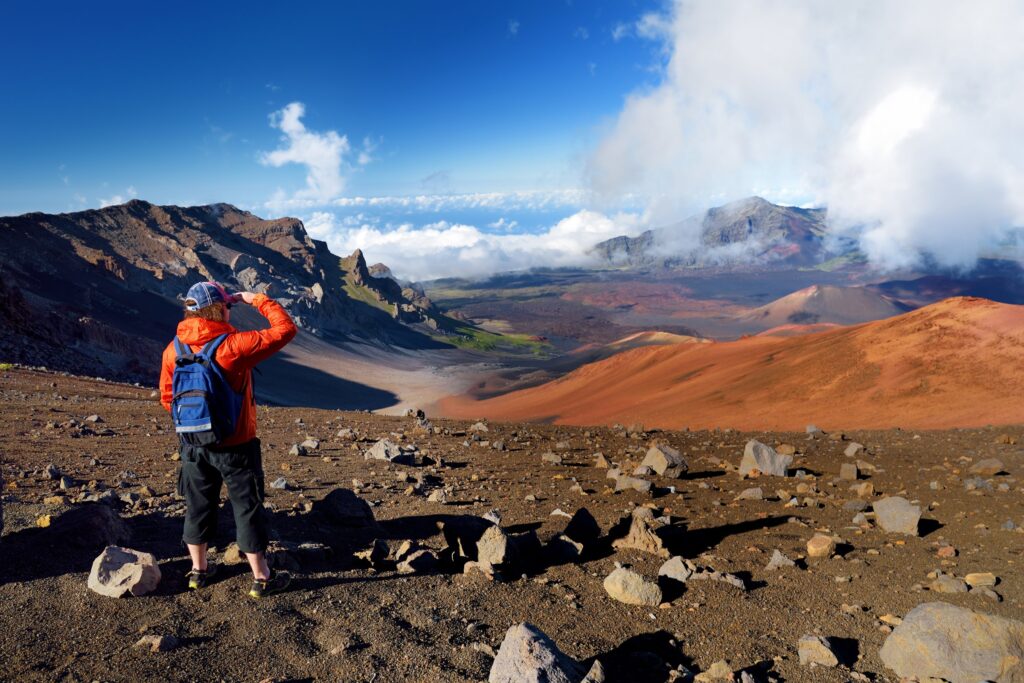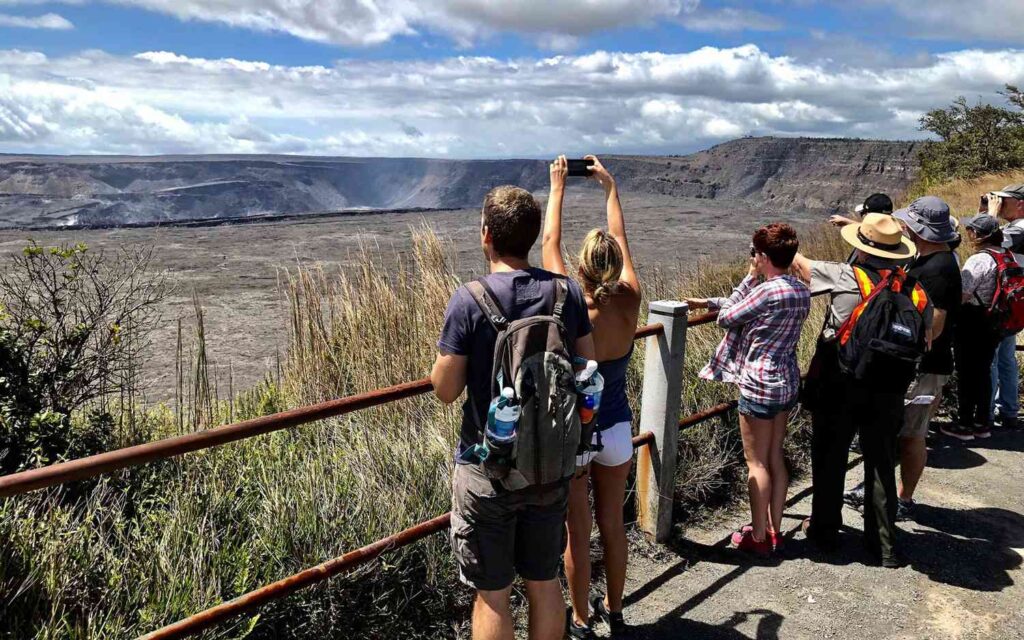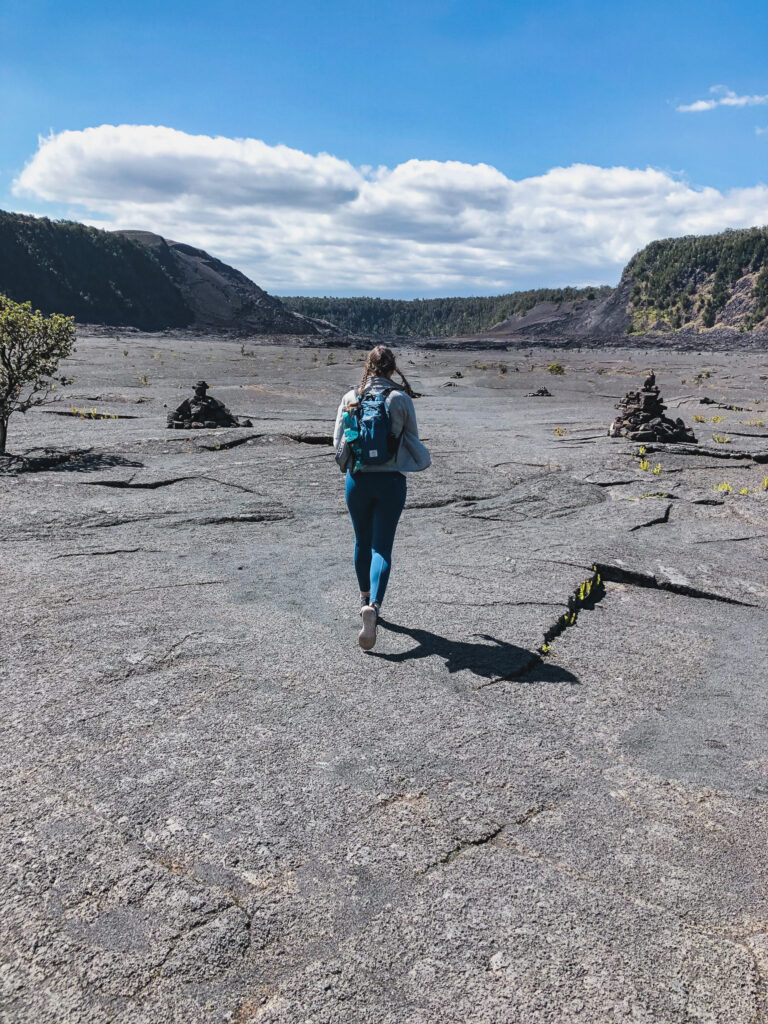Are you ready to embark on an unforgettable adventure and witness the awe-inspiring beauty of Hawaii’s volcanic craters? Brace yourself for an exhilarating experience as you venture into the heart of these natural wonders. From the vibrant hues of the molten lava to the ethereal landscapes carved by centuries of volcanic activity, every step you take will be filled with wonder and amazement. So, lace up your hiking boots, grab your camera, and get ready to immerse yourself in the breathtaking allure of Hawaii’s stunning volcanic craters.
Planning and Preparation
Researching the Craters
Before embarking on your hike to Hawaii’s volcanic craters, it is essential to research and gather information about the specific craters you wish to visit. Each crater has its unique features and characteristics, so understanding what each one offers will help you create an itinerary that suits your interests. Explore the different types of craters, such as calderas or vents, and learn about their geological significance. Understanding the history and geological processes behind these craters will enhance your overall experience.
Choosing the Right Time of Year
The time of year you choose for your hike to Hawaii’s volcanic craters can greatly impact your experience. The weather, crowd levels, and even volcanic activity can vary depending on the time of year. Generally, the summer months (June to August) offer the most reliable weather, with warm temperatures and minimal rainfall. However, this period also tends to be more crowded. If you prefer fewer crowds, consider visiting during the shoulder seasons of spring (April to May) or fall (September to October). Additionally, check the volcanic activity reports to ensure you plan your visit during a period of relative calm.
Checking Permits and Regulations
Before setting off on your hike, it is crucial to check for any required permits and familiarize yourself with the regulations governing the areas you plan to explore. Certain areas within Hawaii Volcanoes National Park, for example, may have specific access restrictions or require permits for hiking. Research the park’s website or contact the park authorities to understand the rules and regulations in place. By adhering to these guidelines, you will contribute to the preservation of these unique natural wonders and ensure a positive experience for yourself and future visitors.
Packing Essential Gear
To have a safe and comfortable hike to Hawaii’s volcanic craters, it is essential to pack the right gear. Some essential items to consider include sturdy hiking boots, a comfortable backpack, lightweight and moisture-wicking clothing, a hat for sun protection, sunscreen, insect repellent, a first aid kit, a map or GPS device, plenty of water, snacks, and a camera to capture memorable moments. Consider the terrain and weather conditions when selecting your gear to ensure you are adequately prepared for the hike.
Getting to Hawaii
Choosing the Right Island
Hawaii is made up of several islands, each offering its unique volcanic craters and hiking opportunities. When planning your trip, consider which island(s) you would like to visit based on the specific craters you want to explore. The Big Island, also known as Hawaii Island, is particularly known for its volcanic activity and offers breathtaking craters within Volcanoes National Park. Maui, Oahu, and Kauai also have their volcanic craters worth exploring. Research the different islands and their respective craters to determine which ones align with your interests and preferences.
Booking Flights and Accommodation
To reach the Hawaiian islands, you will need to book flights to one of the major airports such as Honolulu International Airport (HNL) on Oahu or Kona International Airport (KOA) on the Big Island. Look for flight deals and compare prices from different airlines to find the best option for you. Once you have arrived, it is time to secure your accommodation. Whether you prefer a luxurious resort, a cozy vacation rental, or a budget-friendly hostel, there are plenty of options available on each island. Consider staying near the areas where the craters are located for easy access to your hiking destinations.
Renting a Car
Renting a car is highly recommended when exploring Hawaii’s volcanic craters. Having a reliable mode of transportation will allow you to reach the various crater sites and navigate the islands at your own pace. Many car rental companies operate on the Hawaiian islands, so compare prices and book in advance to secure the best rates. Make sure to familiarize yourself with local driving rules and regulations, including any specific requirements for driving within Volcanoes National Park.

Explore Uncharted Hawaiian Destinations
Exploring Hawaii’s Volcanic Craters
Visiting Hawaii Volcanoes National Park
Hawaii Volcanoes National Park on the Big Island is a must-visit destination for anyone interested in exploring volcanic craters. The park encompasses two active volcanoes, Kilauea and Mauna Loa, and offers numerous hiking trails that lead to stunning volcanic landscapes. Take your time to explore the park’s visitor center and learn about the geological and cultural significance of the area. From there, you can embark on hikes suitable for different skill levels, allowing you to witness the power and beauty of Hawaii’s volcanic activity up close.
Taking Guided Tours
If you prefer a guided experience, consider joining a guided tour to explore Hawaii’s volcanic craters. Guided tours offer the expertise of local guides who can provide valuable insights into the geological processes, history, and cultural significance of the craters. These tours often provide transportation, ensuring that you can focus on the experience without worrying about logistics. Whether you choose a half-day tour or a multi-day excursion, guided tours can offer a structured and educational way to explore the craters while maximizing your time on the islands.
Hiking Routes and Difficulty Levels
Hawaii’s volcanic craters offer a range of hiking routes, each varying in length, difficulty, and terrain. Research the different hiking options available in each crater to find routes that align with your fitness level and preferences. Some hikes may lead you to the rim of the craters, while others take you deeper into the volcanic landscapes. Consider your comfort with elevation gain, uneven ground, and exposure to determine which routes suit your abilities. Remember to respect any trail closures or warnings due to volcanic activity, as safety should always be a priority.
Safety Considerations
While hiking Hawaii’s volcanic craters can be an incredible experience, it is important to prioritize safety. Volcanic activity can be unpredictable, so be sure to check the latest updates and alerts from the authorities and adhere to any warnings or closures. Stay on designated trails and follow the instructions provided by park rangers or guides. Be mindful of the weather conditions and bring appropriate gear, such as rain jackets or extra layers, if needed. Stay hydrated, pack enough food, and let someone know about your hiking plans. By taking these precautions, you can have a safe and enjoyable hike.
Must-See Volcanic Craters
Kilauea Caldera
Kilauea Caldera is one of the most iconic craters within Hawaii Volcanoes National Park. This massive crater stretches over two miles in diameter and offers mesmerizing views of the active volcanic landscapes. The popular Kilauea Iki Trail allows hikers to descend into the crater, offering a unique perspective of the volcanic activity. Standing at the rim of Kilauea Caldera, you can witness the awe-inspiring sight of lava spewing from Halema’uma’u Crater, which is nested within Kilauea Caldera.
Halema’uma’u Crater
Nested within Kilauea Caldera, Halema’uma’u Crater is a must-see destination for volcanic crater enthusiasts. With its ever-changing volcanic activity, including the possibility of lava lake formations, Halema’uma’u offers a captivating sight. Hiking trails near the crater allow you to witness the power and beauty of the volcanic landscapes surrounding this crater. Be sure to check for any safety restrictions or closures before planning your visit to Halema’uma’u.
Mauna Ulu
Located within Hawaii Volcanoes National Park, Mauna Ulu is a unique volcanic crater known for its impressive lava flows and geological formations. This shield-shaped volcano was active from 1969 to 1974, leaving behind a vast landscape of hardened lava. Hiking trails in the area offer the opportunity to explore Mauna Ulu’s unique features, including lava tunnels, steam vents, and panoramic views of the surrounding volcanic landscapes. Witnessing the transformative power of Mauna Ulu’s eruption history is an unforgettable experience.
Pu’u ‘O’o Vent
Pu’u ‘O’o Vent is another captivating volcanic crater worth visiting in the Hawaiian Islands. This cone-shaped vent has been continuously active since 1983, making it one of the longest-running eruptions in recorded history. While access to Pu’u ‘O’o Vent has been restricted in recent years due to increased volcanic activity, it remains an iconic landmark within Hawaii Volcanoes National Park. Spectators can still admire the plumes of volcanic gases rising from the vent, showcasing the ongoing volcanic process.
Puna Coast Lava Fields
The Puna Coast Lava Fields on the Big Island offer an extraordinary opportunity to witness the impact of volcanic activity firsthand. This vast expanse of lava fields, created during eruptions throughout history, showcases the raw and desolate beauty of molten rock. Hiking across the Puna Coast Lava Fields gives you a chance to experience the surreal landscapes shaped by the powerful flow of lava. Be aware of any safety restrictions in place and exercise caution while exploring these areas.

Plan Your Dream Hawaiian Getaway
Capturing Memories
Photography Tips
When hiking to Hawaii’s stunning volcanic craters, capturing memories through photography becomes an integral part of the experience. Here are some tips to help you capture the beauty and essence of these volcanic landscapes:
- Capture the scale: Use elements such as trees, rocks, or people to provide a sense of scale and show the grandeur of the craters.
- Utilize lighting: Experiment with different lighting conditions, such as sunrise or sunset, to create dramatic and atmospheric shots.
- Include human elements: Incorporate people or hikers in your shots to add a sense of adventure and emphasize the scale of the volcanic craters.
- Capture textures: Focus on the unique textures and patterns created by the volcanic rock formations, highlighting the rugged beauty of the landscape.
- Experiment with angles: Play with different angles and perspectives to showcase the depth and dimension of the volcanic craters. Remember to always respect the natural environment and adhere to any photography guidelines or regulations in place.
Recording Geographical Data
To enhance your hiking experience and preserve accurate geographical data, consider recording important information about the craters you visit. This can include GPS coordinates, elevation gains, trail lengths, and any notable landmarks or features. Utilizing a GPS device or smartphone app specifically designed for hiking and recording waypoints can help ensure the accuracy of your data. This information not only allows you to relive your hiking experience but also helps contribute to the scientific understanding of these volcanic landscapes.
Creating a Hiking Journal
Keeping a hiking journal is an excellent way to document your experiences and reflect on the beauty of Hawaii’s volcanic craters. Use your journal to write down your impressions, observations, and feelings during your hikes. Include details about the trails, the craters you visited, and the highlights of each location. Additionally, you can add sketches, photographs, or pressed flowers as visual reminders of your journey. A hiking journal serves as a cherished memento, allowing you to relive the memories and share your adventures with others.
Enjoying the Local Culture
Attending a Hawaiian Lava Ceremony
Immerse yourself in the rich cultural heritage of Hawaii by attending a traditional Hawaiian lava ceremony. These ceremonies are performed by native Hawaiians to pay tribute to Pele, the goddess of volcanoes. Witnessing a lava ceremony allows you to learn about the spiritual connection between the Hawaiian people and the volcanic landscapes that surround them. The ceremonies often involve chanting, music, dance, and offerings, creating a deeply meaningful and memorable experience.
Exploring Traditional Cuisine
Hawaii’s vibrant culinary scene is heavily influenced by its diverse cultural heritage. Be sure to indulge in traditional Hawaiian cuisine during your visit. Sample dishes such as poi (a starchy paste made from taro root), Kalua pig (slow-roasted pork), and Lau Lau (meat wrapped in taro or banana leaves). Exploring the local food markets and trying various street food offerings is a great way to immerse yourself in the flavors of Hawaii. Don’t forget to try the refreshing and tropical shave ice for a sweet treat after a long day of hiking.
Learning About Hawaiian Mythology
Hawaii is steeped in mythology, and delving into these stories and legends adds a deeper layer of appreciation to your visit. Take the time to learn about the ancient Hawaiian myths and folklore that revolve around the volcanic craters. Discover the tales of Pele, the volcano goddess, and explore the significance of volcanic activity in Hawaiian culture. Visiting cultural centers or participating in guided tours led by local experts will provide you with fascinating insights into the mythology and beliefs tied to Hawaii’s volcanic craters.

Experience Hawaii’s Unique Attractions
Post-Hike Relaxation
Soaking in Natural Hot Springs
After an exhilarating hike to Hawaii’s volcanic craters, treat yourself to a soothing soak in one of the natural hot springs found on the islands. The Big Island is home to several hot springs, including Ahalanui Park, where you can relax in a thermally heated pool with views of the ocean. These hot springs offer a therapeutic experience, rejuvenating both your body and mind after a challenging hike. Soaking in the warm mineral-rich waters provides the perfect opportunity to reflect on your journey and appreciate the beauty of the surrounding landscapes.
Exploring Beaches and Waterfalls
Hawaii boasts an abundance of breathtaking beaches and majestic waterfalls, offering a perfect post-hike relaxation experience. Head to the coast and unwind on the golden sands, swim in the crystal-clear turquoise waters, or try your hand at water sports such as snorkeling or paddleboarding. For a tranquil escape, venture to one of the island’s lush rainforests to discover hidden waterfalls. Surrounded by lush greenery and the soothing sound of cascading water, these ethereal locations provide a serene backdrop for peaceful contemplation.
Indulging in Spa Treatments
Pamper yourself with a well-deserved spa treatment after your hike to Hawaii’s volcanic craters. Numerous luxury resorts and wellness centers offer a range of treatments inspired by Hawaiian traditions and natural ingredients. Treat yourself to a volcanic rock massage, a body wrap using local botanicals, or a rejuvenating facial using volcanic ash-based products. These spa experiences not only relax your muscles but also allow you to immerse yourself in the holistic essence of Hawaiian wellness practices.
By following these tips and recommendations, you can experience the wonder and beauty of hiking to Hawaii’s stunning volcanic craters while ensuring safety, preservation, and a truly unforgettable adventure.
